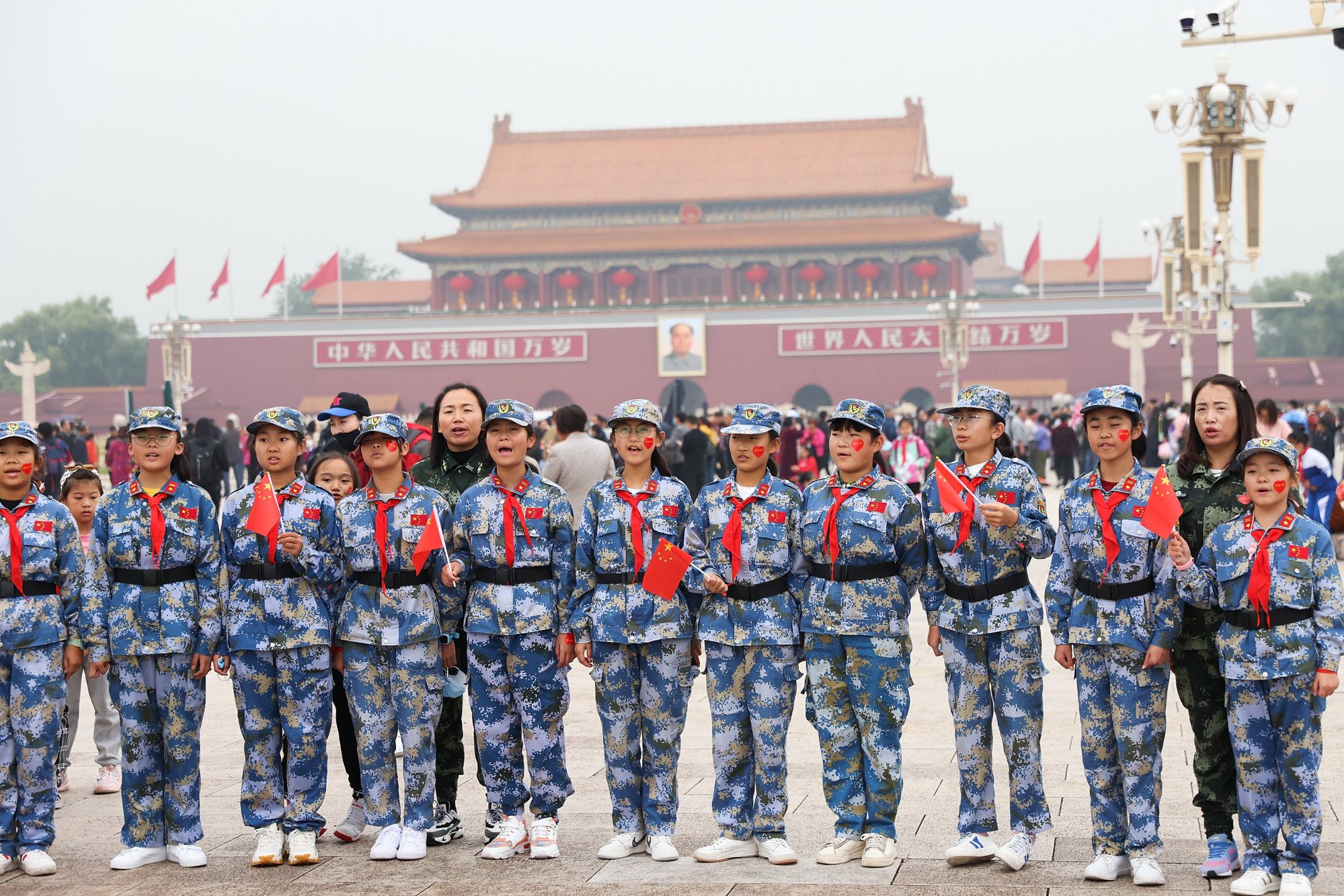
China: ‘slanted eyes’ ad snack company in hot water again over earlier campaign using revolutionary red scarf
- Snack maker Three Squirrels forced to apologise again after an old ad featuring unauthorised use of the revolutionary red scarf resurfaced
- It follows an apology issued last week after the company was accused of using models with ‘slanted eyes’ in another ad campaign
It is the second recent high-profile apology from snack maker Three Squirrels after it was besieged online last week over another ad using a model perceived to have “slanted eyes”. Many critics in China said the image was stereotyping Asian beauty.
In a statement on Weibo on Monday, the company acknowledged it failed to double-check a 2019 ad which showed a teenage boy and girl both wearing the red scarf, a symbol of the Young Pioneers of China
“After receiving the formal notice from the Young Pioneers Work Committee, we realised the importance of this issue and removed the page containing this advertisement on April 1, 2019,” the statement read.
On the mainland, primary and middle school students are required to wear the red scarf when attending school. They are called members of the Young Pioneers of China, an organisation that is led by the Chinese Communist Party where they study socialism with Chinese characteristics and communism, according to the website of the Young Pioneers of China.

“It is a corner of the red flag and it is dyed by the blood of revolutionary martyrs. Every member should wear it, cherish it, and try to add more glory to it,” the website continued.
The national committee of the Young Pioneers of China stipulated in a 2005 directive that the red scarf, along with the organisation’s flag, emblem and song, must not be used in trademarks, advertisements or for commercial events.
‘Am I not Chinese?’: model pushes back against ‘slanted eyes’ critique
Experts said featuring the red scarf in an advertisement is illegal in China, because although China’s Advertisement Law does not have a specific clause on banning the use of the red scarf, they said advertisements should not impede public orders or violate social norms.
In June 2020, the marketing supervision authority in Chengdu, Sichuan, talked with the owner of a restaurant and asked him to take down pictures of a red scarf on its logo and on the walls inside his establishment.
Police in Rongxian county, Sichuan, put a woman under detention for 12 days and fined her 1,000 yuan (US$157) in 2019 for her videos in which she was scantily clad in a fishing pond and wore a red scarf. Police claimed her videos, which aimed to attract eyeballs, had blasphemed the heroes and martyrs the red scarf represents and caused a negative social impact.

